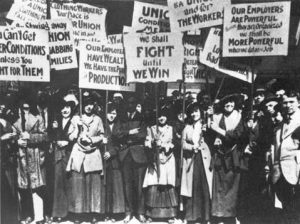wages

 When my oldest daughter, Corrie Petersen was born, it was one of the happiest days of her great grandmother, Nettie Knox’s life, because her first great grandchild had been born on her birthday. It’s called “birthday twins” and it’s been the coolest thing for both Grandma Knox and Corrie. When Corrie was little, and indeed until grandma passed away when she was just a month past 82, and Corrie was just a month past 15, they celebrated their birthdays together. It was so important to both of them. Their bond was a very special one and lasted for the rest of Grandma’s life…and beyond. I know that with Grandma in Heaven now, Corrie feels sad sometimes, and her birthday is just a little bittersweet, but I hope Corrie knows just how proud Grandma always was of her.
When my oldest daughter, Corrie Petersen was born, it was one of the happiest days of her great grandmother, Nettie Knox’s life, because her first great grandchild had been born on her birthday. It’s called “birthday twins” and it’s been the coolest thing for both Grandma Knox and Corrie. When Corrie was little, and indeed until grandma passed away when she was just a month past 82, and Corrie was just a month past 15, they celebrated their birthdays together. It was so important to both of them. Their bond was a very special one and lasted for the rest of Grandma’s life…and beyond. I know that with Grandma in Heaven now, Corrie feels sad sometimes, and her birthday is just a little bittersweet, but I hope Corrie knows just how proud Grandma always was of her.
These past few years…the craziest ones Corrie has ever spent, have brought her to a new career, and I have been thinking about just how proud Grandma would have been of her birthday twin. She was always proud of Corrie, and it didn’t matter what kind of work she did, but the hard work to get where she is now…that’s what Grandma would have been proud of. Grandma was a hard-working woman in her younger years, but most of it was housework and raising her children. These days many women work outside the home. It is more unusual for someone to be a stay-at-home mom. The opportunities for Grandma were different than those available to Corrie. Then again, the things she did, that Corrie will never do, are many as well.
Grandma was born on June 30, 1908. Life was quite different then. The automobile was invented, but still very new, and it was not unusual to see horses and buggies on the same streets as the cars. These days, people are fighting for a minimum wage of $15.00 an hour, but back then, the average factory worker made around $12.00 a week!! Of course, the prices of things were much less then too, but it does show a markedly different 
 world when Grandma was born, than the one we live in now. When you think about it, if we cut the price of everything and then cut the wages, we would be in the same place we are right now. Grandma Knox saw a lot of changes during her time here on Earth, and I’m sure some things seemed as strange as the first laptop did to us. Progress is a big deal in any era. Still, for Grandma, little could top that fact that her first great grandchild had arrives on her birthday. She considered it the best gift ever. Today marks the 115th anniversary of Grandma Knox’s birth!! Happy birthday in Heaven, Grandma. We love and miss you very much.
world when Grandma was born, than the one we live in now. When you think about it, if we cut the price of everything and then cut the wages, we would be in the same place we are right now. Grandma Knox saw a lot of changes during her time here on Earth, and I’m sure some things seemed as strange as the first laptop did to us. Progress is a big deal in any era. Still, for Grandma, little could top that fact that her first great grandchild had arrives on her birthday. She considered it the best gift ever. Today marks the 115th anniversary of Grandma Knox’s birth!! Happy birthday in Heaven, Grandma. We love and miss you very much.
 While most of the economy in Southeast Texas depended on agriculture, cattle ranching, and the lumber business in the 19th century, things were about to change. The presence of oil was known, but untapped until 1901 when the oil industry would change the landscape of the region. Uses for oil date back many years. In the 1500s, the Spanish used oil from seeps near Sabine Pass for caulking their ships, and to the north, settlers near Nacogdoches used seeping oil for lubricants before 1800. There were numerous discoveries in east and central Texas in the later 1800s, especially at Corsicana in 1896. Attempts were made to drill wells at Spindletop 1893 and 1896 and at Sour Lake in 1896, but they had no successful oil production along the Gulf Coast until the Lucas Gusher came in on Spindletop Hill on January 10, 1901.
While most of the economy in Southeast Texas depended on agriculture, cattle ranching, and the lumber business in the 19th century, things were about to change. The presence of oil was known, but untapped until 1901 when the oil industry would change the landscape of the region. Uses for oil date back many years. In the 1500s, the Spanish used oil from seeps near Sabine Pass for caulking their ships, and to the north, settlers near Nacogdoches used seeping oil for lubricants before 1800. There were numerous discoveries in east and central Texas in the later 1800s, especially at Corsicana in 1896. Attempts were made to drill wells at Spindletop 1893 and 1896 and at Sour Lake in 1896, but they had no successful oil production along the Gulf Coast until the Lucas Gusher came in on Spindletop Hill on January 10, 1901.
Spindletop Hill was a salt dome oil field, that was located in the southern portion of Beaumont, Texas. People had long suspected that oil might be under the hill as the area had been known for its sulfur springs and  bubbling gas seepages that would ignite if lit. Then in August, 1892, several men including George W. O’Brien, George W. Carroll, and Pattillo Higgins formed the Gladys City Oil, Gas, and Manufacturing Company to do exploratory drilling on Spindletop Hill.
bubbling gas seepages that would ignite if lit. Then in August, 1892, several men including George W. O’Brien, George W. Carroll, and Pattillo Higgins formed the Gladys City Oil, Gas, and Manufacturing Company to do exploratory drilling on Spindletop Hill.
By September 1901, there were at least six successful wells on Gladys City Company lands. Wild speculation drove land prices around Spindletop to incredible heights. One man who had been trying to sell his tract there for $150 for three years sold his land for $20,000; the buyer promptly sold to another investor within fifteen minutes for $50,000. One well, representing an initial investment of under $10,000, was sold for $1,250,000. Legal entanglements and multimillion-dollar deals became almost commonplace. An estimated $235 million had been invested in oil that year in Texas; while some had made fortunes, others lost everything.
Following the success of the oil industry at Spindletop Hill, many people, including my grandparents, Allen and  Anna Spencer would make their way to Texas in search of a better life. They would settle on the oilfields near Ranger, Texas. They didn’t find any oil fields, so their income came from his work for other people in the oilfields. These days people working in the oilfield business make good money, but as near as I can tell oilfield workers averaged about 90 cents an hour in 1919, which would be about $11.74 an hour today. That’s pretty poor wages, especially for the oilfield, but I suppose people didn’t realize how valuable they really were. Needless to say, the oilfield was not the place my grandfather would choose to make his living, and eventually they returned to Wisconsin where he went to work for the railroad.
Anna Spencer would make their way to Texas in search of a better life. They would settle on the oilfields near Ranger, Texas. They didn’t find any oil fields, so their income came from his work for other people in the oilfields. These days people working in the oilfield business make good money, but as near as I can tell oilfield workers averaged about 90 cents an hour in 1919, which would be about $11.74 an hour today. That’s pretty poor wages, especially for the oilfield, but I suppose people didn’t realize how valuable they really were. Needless to say, the oilfield was not the place my grandfather would choose to make his living, and eventually they returned to Wisconsin where he went to work for the railroad.
 In a day and age when we see protests so often that we often pay very little attention, it’s easy to think that the protestors are just being ridiculous, and sometimes they are. That makes it easy to overlook the situations that really should be protested, or at least greeted with outrage. I suppose that every issue that is protested has its outrage, and sometimes the only way to get the attention an issue needs is to walk out and protest. Sometimes protests are simply the last resort.
In a day and age when we see protests so often that we often pay very little attention, it’s easy to think that the protestors are just being ridiculous, and sometimes they are. That makes it easy to overlook the situations that really should be protested, or at least greeted with outrage. I suppose that every issue that is protested has its outrage, and sometimes the only way to get the attention an issue needs is to walk out and protest. Sometimes protests are simply the last resort.
On this day, September 4, 1894, 12,000 tailors embarked on a strike to fight against the “sweatshop” system that exploited their labor. The tailors demanded that they be given a 10 hour work day, with an hour off for lunch. They wanted a weekly minimum wage and a weekly pay day. The “Protective Association” of cloakmaker manufacturers as well as important clothing dealers, “declared that they considered the demands of the men right, that no business which could not pay the workers the minimum wages asked ought to exist,” while “the  press and the public have also heartily sustained these demands, so that there can be no doubt that the public will pay, if necessary, the increased prices for the clothing rendered necessary.” While all that sounded good, the strike would continue through much of the fall. The striking workers said that the had to live half a year on what they could save out of the meager $4 per week they earned during the other half of the year. The year 1894 was a year of economic depression and widespread labor unrest. The strikes included the Pullman Strike, which paralyzed the railroads, and made Eugene Victor Debs America’s most important labor leader.
press and the public have also heartily sustained these demands, so that there can be no doubt that the public will pay, if necessary, the increased prices for the clothing rendered necessary.” While all that sounded good, the strike would continue through much of the fall. The striking workers said that the had to live half a year on what they could save out of the meager $4 per week they earned during the other half of the year. The year 1894 was a year of economic depression and widespread labor unrest. The strikes included the Pullman Strike, which paralyzed the railroads, and made Eugene Victor Debs America’s most important labor leader.
Labor conditions were atrocious in many cases, and the laborers often had little recourse. The big business owners had the control, and the laborers were at their mercy. If they wanted a job, they were to “shut up and do their job” or they wouldn’t have one. Many times these laborers had limited education, and so few options.  They also had families to support. Their wages were their lifeline, so they worked and worked, hoping that somehow they might create a better life for themselves and their families. These people were willing to work. All they asked for was a fair shake. Finally, they got to a point where they knew that they weren’t going to get that fair shake and they were left with no other options but to strike. It’s sad that it had to come to that point, but sometimes the strike and protest is all you have. There were other protests within the tailor industry, and many other industries too. Each one probably improved a few things, and eventually conditions got better. Of course, there will always be things to protest and people who will do so.
They also had families to support. Their wages were their lifeline, so they worked and worked, hoping that somehow they might create a better life for themselves and their families. These people were willing to work. All they asked for was a fair shake. Finally, they got to a point where they knew that they weren’t going to get that fair shake and they were left with no other options but to strike. It’s sad that it had to come to that point, but sometimes the strike and protest is all you have. There were other protests within the tailor industry, and many other industries too. Each one probably improved a few things, and eventually conditions got better. Of course, there will always be things to protest and people who will do so.
 When my great aunt, Bertha Schumacher Hallgren wrote her journal, she said that, “making a record of the simple, everyday things you see, feel, and hear around you – and passing them on to posterity” would make you famous. It seems such a simple thing, and yet, whether Bertha was famous in her time or not, her journal has definitely been read by many people now, so I guess she was famous with the people who mattered. Aren’t her family members among the most important ones to read her writings. I think they are. Bertha said to write about the simple everyday things. That really is something that can have an impact on the reader.
When my great aunt, Bertha Schumacher Hallgren wrote her journal, she said that, “making a record of the simple, everyday things you see, feel, and hear around you – and passing them on to posterity” would make you famous. It seems such a simple thing, and yet, whether Bertha was famous in her time or not, her journal has definitely been read by many people now, so I guess she was famous with the people who mattered. Aren’t her family members among the most important ones to read her writings. I think they are. Bertha said to write about the simple everyday things. That really is something that can have an impact on the reader.
In her journal, Bertha talks about the first family car. It was brand new, and state of the art…and they paid $650.00 for it. When we buy a new car now, $650.00 seldom covers the monthly payment. The car itself costs upward of $31,000.00, and could cost much more. I realize that wages were much smaller when Bertha was a girl, but I have to wonder if she would just about pass out if she heard the cost of a car now. When people put gasoline in their car in 1925 they paid approximately 20 cents a gallon. These days $3.35 is pretty good for gas prices, and in some places, they pay as much as $4.35. And that is just today. Gas prices have gone up and down, and has been $6.00 a gallon before. I doubt if people from 1925 ever thought we would end up paying that kind money for gasoline today. We, of course, would love to be able to buy gasoline for 20 cents a gallon, but those days are gone forever.
When we look back on the prices of things in history, I think most are likely in proportion with the wages, for the most part. But, when we look at the difference in the prices of things, we seldom think about the wage difference. We just wonder how they expect people to pay such a horrible price for these things. I think it doesn’t occur to us that most likely we are making more money and so the prices of things aren’t really so far  out of line with the wages we make. Gas prices, especially hit hard, because the people of the United States are a very mobile people. We like our cars, and we want to be able to go when we want, and where we want. And, sometimes, that price at the pump starts eating into our ability to do that. We get annoyed.
out of line with the wages we make. Gas prices, especially hit hard, because the people of the United States are a very mobile people. We like our cars, and we want to be able to go when we want, and where we want. And, sometimes, that price at the pump starts eating into our ability to do that. We get annoyed.
I would love to be able to pay $650.00 for a new car like my great grandfather did years ago, but if you don’t mind, I would like to keep my wages right where they are when I buy that new car. That would make the price of that new car very appealing indeed…just not realistic. Whether we like it or not, the prices of things often have a pretty direct correlation with the wages of the day, and we will have to deal with it.

